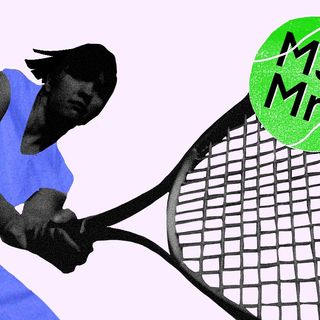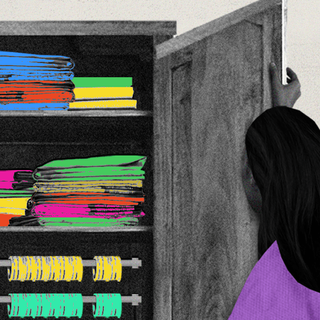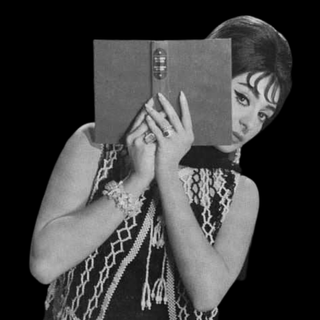
Why Some Songs Become Special for Friends, Partners
Much like KK’s “Yaaron Dosti” which defined friendship for a whole generation, “our songs” become a mental glue for people’s shared identities.

They’re playing our song.
This is a feeling, sometimes put into words, sometimes understood purely by way of an expectant look. “Our” in this equation could be anyone: friends, lovers, ex-partners, siblings, colleagues. Two or more people finding a shared identity, forged in a particular song, through a song — is one of the many underappreciated joys of relationships. My seventh-grade best friend and I still jam on Taylor Swift’s “Love Story.” With my work best friend, ABBA’s “S.O.S.” is always the first track we darlingly listen to; it started off as a joke but is now a sacred part of our relationship. On every road trip, it is almost a passage of rite to listen to “Dil Chahta Hai” and unrhythmically join in the “Ooooh” chorus.
Songs, memories, love. Perhaps the one tune that truly captures the endearing relationship is singer K.K.’s “Yaaron Dosti,”the celebrity song at farewells, which is veritably a paean of friendship. The singer’s abrupt passing on Tuesday left a whole generation to grapple with the tangible memories heleft behind in the form of music that so winningly bound people. “Yaaron Dosti” truly is “our” song, our here holding friends and strangers alike.
What explains this relationship? Why do some songs become “our songs”? There’s a psychological explanation about what makes “special” music integral to a relationship. For one, these songs evoke memories of a specific time or event in a dynamic — maybe the first time someone met, went on a date, took a trip together, orbonded over a shared feminist ideology. These songs become a “shared or autobiographical memory triggered by music; they work as a ‘mental glue’ for a couple’s shared identity,” wrote Amee Baird and Bill Thompson, two researchers who looked into the emotional appeal of shared songs. The song becomes a window to reconnect with others or even oneself. In Moonlight, Barbara Lewis’s “Hello Stranger” is the song for high school best friends Kevin and Chiron; Kevin plays it as a gesture of remembering their friendship.
Even instinctively, the song becomes a way to sustain the shared past people once had together. This is nostalgia, tied to an unwavering sense of preservation. There’s something called the “reminiscence bump,” a period extending from adolescence to early adulthood (roughly 15 to 24 years), where people are establishing their identity and meeting people who may become a part of their emotional ecosystem. The songs people listen to during this period are more likely to evoke autobiographical memories.
When you think “I Walk 500 Miles,” one can almost picture an adolescent Ted Mosby and Marshall Eriksenfrom How I Met Your Mother cruising in their car, taking a trip to Minnesota. Even partners who meet early in life — high school sweethearts orcollege lovers, if you will — are more likely to have identified a “special song” in this reminiscencebump.
Related on The Swaddle:
How Pop Culture Paints an Unhealthy, Unsustainable Picture of Friendships
There are a bunch of theories as to why this happens: people are better at recalling first-time experiences, most of which happen during these years; some say it is a defining period where key experiences occur; another research suggests that in this golden period, “we lay down memories and store information that will define who we are for the rest of our lives — the crystallization of the self in memory.” The music-evoked nostalgia is not only a way to remain tethered to the past or even escape the present, but a reminder that joy can always be found.
This explains why music is the tune to which social cohesion always plays out. “Our” songs can be songs of a community, of a nation, of solidarity, or even of rebellion. Collective chants have always been a way to form social relationships, further explaining music’s power in binding people’s identities.
The role of music in binding people is inextricably related to how it triggers memories in the brain. This is similar to photographs: music is a “super stimulus” for the brain that activates brain regions associated with emotions, memory, and controlling movement.
The wondrous thing about “our songs” is how persistent they can be in embedding themselves into the memory. You don’t have to listen to “Love Story” every day to blast out “Romeo, take me somewhere we can be alone” at the turn of the chords; orShaam’s “Tanha Dil” to remember the exact point “Dhoonde tujhe phir kyoon nazar” comes. This association, turns out, is retained in our minds even in older age and in the face of cognitive decline.
Baird and Thompson in their research looked at people with dementia, which is associated with Alzheimer’s disease that causes impaired memory. In many cases, people retained musical abilities and even memories of special songs they hadbonded over with people. Music and memory remained “an island of preservation,” as they noted. Former ballet dancer Marta Cinta González Saldaña once danced to the epic Swan Lake, now she is living with Alzheimer’s disease. On listening to the theme, her hands were stirred to echo the music from another time, as documented in this video. This could be because powerful, emotionally vivid music engages with the frontal regions of the brain, which remains relatively healthy even in people with Alzheimer’s disease. “…music can trigger memories in a way no other catalyst can,” the researchers concluded.
On this 1st of June, when the world is grieving for reasons more than one, when there is enough to sweat and swear over, succor lies in one song, playing in minds and memories.
Yaaron dosti badi hi haseen hai/Yeh na ho to kya phir/Bolo yeh zindagi hai.
Saumya Kalia is an Associate Editor at The Swaddle. Her journalism and writing explore issues of social justice, digital sub-cultures, media ecosystem, literature, and memory as they cut across socio-cultural periods. You can reach her at @Saumya_Kalia.
Related


What Family Heirlooms Can Teach People About Their Histories
